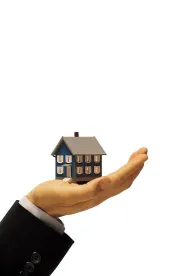You’re in your car heading home when you turn into your condominium development. That road you just entered, it’s a common element. On your route to your unit you pass by the club house and community pool— these are common elements as well. You’re finally home as you pull into your driveway—which, by the way, probably isn’t a common element, but rather most likely a limited common element. You enter your unit. In the case of a condominium, does your unit qualify as a common element, limited common element, or strictly unit owner property? The answer, in fact, is that the unit you just entered is likely a combination of all three. This article will take a closer look at this distinction.
A typical condominium development is comprised of numerous structures that usually include the building or buildings that house individual condominium units, more often than not a club house as well as other lands and improvements such as community pools, fitness centers, playgrounds, etc. These buildings, lands and improvements can be classified as common elements, limited common elements, or unit property. When you purchase a unit in a condominium development, you are in fact not only purchasing ownership rights to a particular unit, but are also acquiring an interest in the common elements and limited common elements. So, what are these common and limited common elements and how do they differ from unit property?
The New Jersey Condominium Act (the “Act”) defines “common elements” to mean “the land described in the master deed . . . as to any improvement, the foundations, structural bearing parts, supports, main walls, roofs, basements, halls, corridors, lobbies, stairways, elevators, entrances, exits and other means of access . . . yards, gardens, walkways, parking areas and driveways, excluding any specifically reserved or limited to a particular unit or group of units.” N.J.S.A. §46:8B-3(d). In essence, common elements are those parts of the condominium development that serve and/or are accessible to the community at large. As with our example above, the streets throughout a condominium development are common elements, as usually are—but not always—the exterior façades of the buildings, the roofs, walkways, any pools, playgrounds, etc. However, you should always refer to your association’s governing documents to ascertain exactly what is—or is not—considered common elements in your particular community.
Contained within the definition of common elements is reference to property “specifically reserved or limited to a particular unit or group of units,” i.e. limited common elements. The Act defines limited common elements as “those common elements which are for the use of one or more specified units to the exclusion of other units.” N.J.S.A. §46:8B-3(k). Typically, improvements such as driveways, balconies, terraces, patios, decks, or walkways that provide direct access to or from the interior of a unit, or are otherwise belonging to a specific unit, are considered limited common elements. Unlike general common elements, limited common elements are reserved for the exclusive use of a specified unit or unit(s). For example, your unit may have a balcony, and that balcony is for your use and your use only, to the exclusion of all other unit owners. Thus, your balcony is a limited common element.
Knowing the distinction between unit property, common elements and limited common elements is essential to understanding your rights and obligations as a member of a condominium development. As with the earlier case, when you acquire the title to a condominium unit, you not only acquire title to your specific unit, but also obtain an ownership interest in the common and limited elements as well as became a member of the condominium association that governs your development. Thus, if you happen to live in a two-unit condominium development, you not only own your unit, but also own a 50% interest in all of the common and limited elements. Now, before you run off and paint your 50% share of the exterior façade of your building, there a few things you should know.
It is usually the association’s exclusive responsibility to administer and manage the condominium and condominium property including the common elements. Pursuant to N.J.S.A. §46:8B-14, the association, through its governing board, is responsible for, among other things, the maintenance, repair, replacement, cleaning and sanitation of the common elements. The association is also responsible for collecting dues and assessments from the unit owners to cover the common expenses of maintaining the common elements. N.J.S.A. §46:8B-14.
Also, the association, or its agents, have the right to access your unit “as may be necessary for the maintenance, repair or replacement of any common elements therein or accessible therefrom . . . .” N.J.S.A. §46:8B-15. For example, if the exterior façade of your building needed repair and your balcony provided direct access to the area needing repair, the association, upon reasonable notice, may enter your unit to access that portion of the exterior façade.
Remember when I mentioned earlier that the association was responsible for assessing and collecting dues to cover the common expenses? Well, along with that responsibility, the association has the power to levy fines, sanctions and even institute legal actions against unit owners who fail to contribute their share of the common expenses, or to unit owners who cause damage to common elements.
As far as what constitutes unit property, imagine standing in the middle of your condominium unit. You look around and you see the walls, the ceiling, and the floor that essentially comprises a box that is your unit. Those are the boundaries of your unit, and they represent your ownership interest in the unit you purchased. In addition to the actual boundary of your unit, the master deed of your condominium will detail the specific items that fall within the definition of unit property. Such items typically include, but may not be limited to, the heating, plumbing and ventilating systems serving the unit, the hot water heater and other electrical appliances such as a dishwasher, the electrical wires that extend from the interior surface of the unit walls, floors or ceilings into the unit and fixtures, switches, outlets and circuit breakers, as well as the plumbing and piping that directly serves the unit. You should check your master deed to understand what items are the responsibilities of the unit owners. This is critical, particularly if your condominium unit experiences water infiltration.
Going back to our original example, imagine you entered your unit and found water damage on your ceiling. The determination as to who is responsible for repairing the water damage will depend on what needs to be repaired. If, for instance, the water damage was caused by a leak in the roof, well, the roof is considered to be a common element and therefore the association has the exclusive responsibility to repair it. If, however, the water damage was caused by a leaky pipe in the ceiling that exclusively serves the unit, then the repair will be the responsibility of the unit owner.
At the end of the day, if you are a condominium unit owner or perspective buyer, you would greatly benefit from reviewing the master deed to best understand what constitutes common and limited common elements, versus unit property. This is particularly noteworthy if your unit or building is experiencing water infiltration issues due to defective construction.
Read Part one here: The Need-to-Knows of Living in a Condominium Development – Part One: The Public Offering Statement



 />i
/>i
